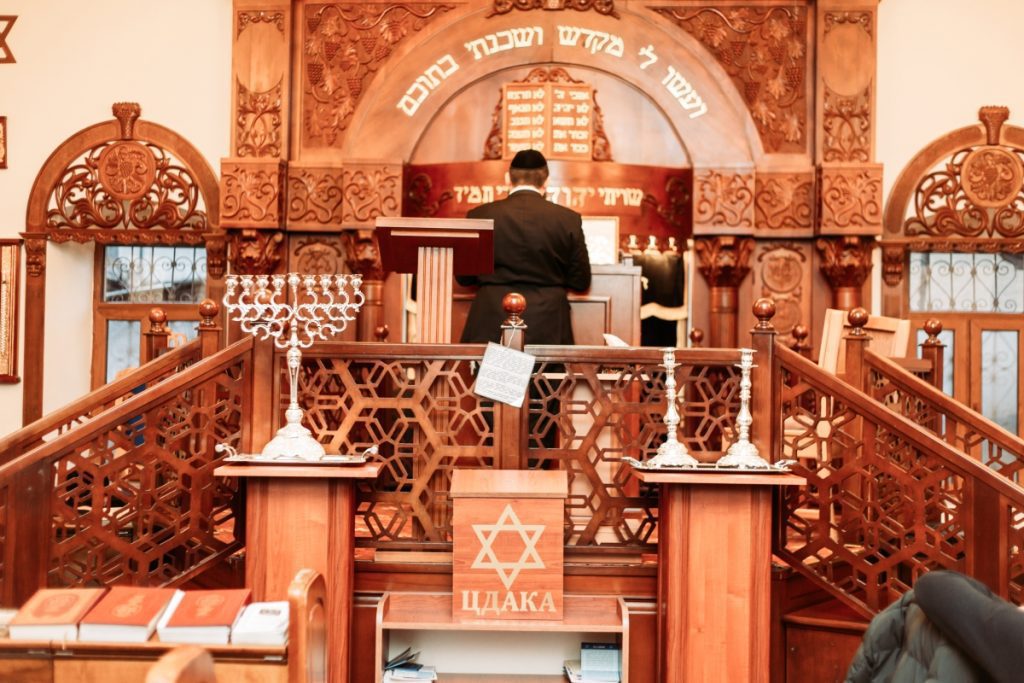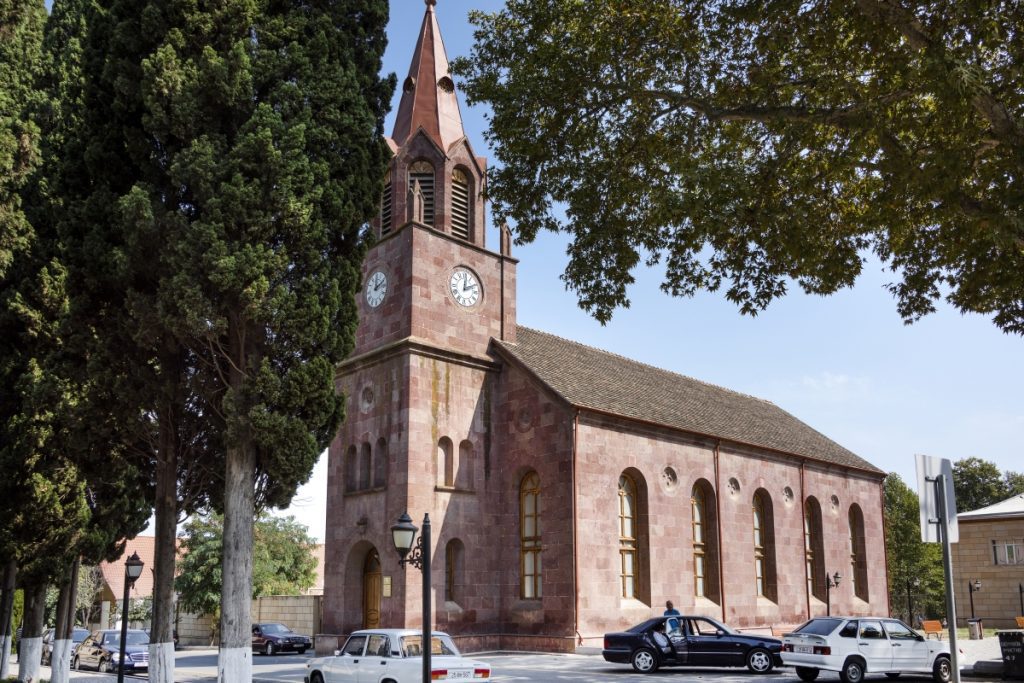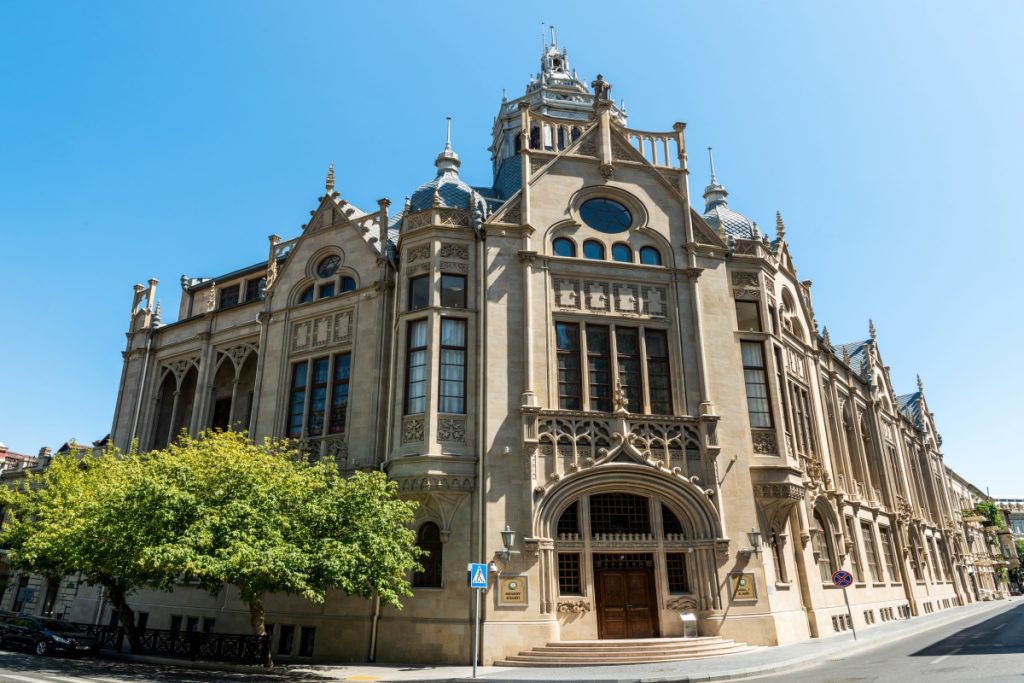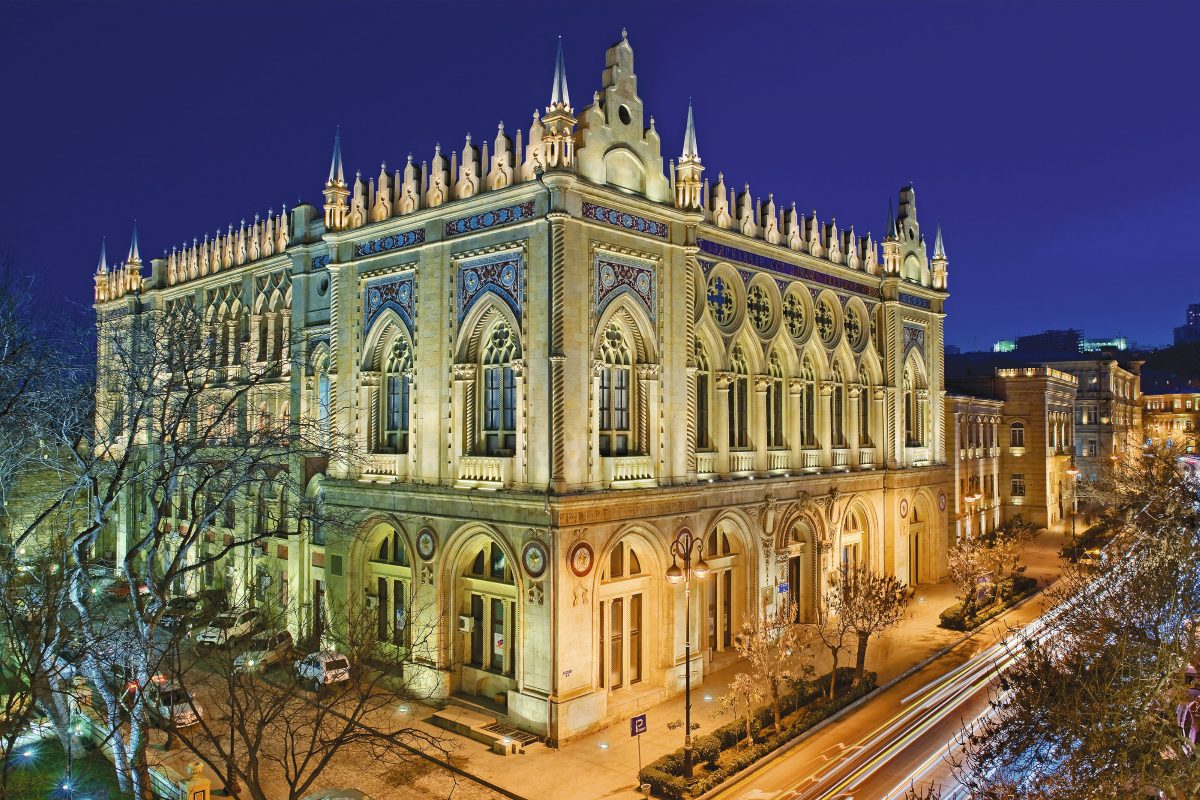Skift Take
For the historically minded traveler, Azerbaijan is a melting pot of culturally diverse influences to explore and experience, many of them little known to first-time visitors.
This sponsored content was created in collaboration with a Skift partner.
Azerbaijan has a history as a Silk Road trading post, is home to sites that speak to its surprising Jewish, German, and Polish heritages, and has an abundance of riches when it comes to art, architecture, craft, food and drink, and more. Its welcoming, tolerant spirit offers the open-minded traveler myriad reasons to reflect on the various ways it’s been shaped by historical forces.
“Azerbaijan is a country that possesses deep traditions of hospitality, tolerance, and multiculturalism. Our main mission as Azerbaijan Tourism Board is to illustrate these features through exciting tourism products,” said Florian Sengstschmid, CEO of Azerbaijan Tourism Board.
Here, SkiftX looks at some of the Azerbaijani sites and traditions that can be traced back to key moments throughout the country’s history.
JEWISH HERITAGE SITES

Today, Azerbaijan is home to a sizable Jewish population, and reminders of its Jewish history appear throughout the country. One of the most significant is the Red Village, located near the Caucasus Mountains, an all-Jewish settlement of about 3,000 inhabitants considered the world’s last surviving shtetl. It is home to three synagogues, one of which doubles as the Museum of Mountain Jews.
The Red Village is connected to Guba — a historic, multicultural city — by a 19th-century arched bridge over the Gudialchay river. Here, visitors can partake in a Mountain Jewish culinary masterclass with local resident Naami Ruvinova, whose repertoire includes interesting twists on classic Azerbaijani dishes like dolma (stuffed leaves) and pilaf, and a vegetarian dish called gaylo.
The Synagogue of Ashkenazi and Georgian Jews in Baku is one of the few synagogues to have been built in that part of the world during the last century, as well as one of the largest in Europe.
GERMAN HERITAGE SITES

An unsuspecting visitor to Goygol may be surprised to come across an abundance of German-style architecture. One of the German settlements established in western Azerbaijan around 200 years ago, Goygol is home to its own German history museum — originally the Saint Helena Lutheran Church — the first Lutheran church in Azerbaijan, dating from 1857. Another must-visit is the Goygol winery, located on the site of a winery established in 1860, and a cellar with 150-year-old German barrels.
Those with Bavarian appetites can seek out the private restaurant of Larissa Danilova, where the specialties include homemade sausages and pork ribs and cakes from German recipes. The home of the late Victor Klein, the last German resident of Goygol — soon to be converted to a museum — is also open to visitors.
In Shamkir, as well as delighting in more German architecture, one may visit a still functioning Lutheran church, and drink Brau beer at the Excelsior Hotel, brewed in their own brewery using Austrian techniques.
POLISH HERITAGE SITES

The rapid development of Baku’s oil industry between the early 1870s and World War I, a period known as the Oil Boom, brought great wealth to the city, triggering the construction of an eclectic mix of European architecture outside the old medieval walls. Much of the architectural reinvigoration in the new city was masterminded by Europeans, including a number of Polish architects. Together, they designed many of the city’s finest buildings, blending the best of local and Western architectural traditions.
One of these architectural highlights is the Presidium of the Academy of Sciences (also known as Ismailiyya Palace), a Venetian Gothic masterpiece designed by Jozef Ploszko, said to have been inspired by Venice’s Palazzo Ducale. The French-Gothic Palace of Happiness, by the same architect, features a prominent statue of a Polish folk hero, Zawisza Czarny (Zawisza the Black). The Baku City Hall building was based on the design by the Polish architect Jozef Goslawski, and is currently home to Baku Executive Power.
The city boasts many more Polish architectural landmarks, including the Lukoil office building, Union of Co-operatives, Baku Department Store, the Institute of Manuscripts, and the Holy Virgin Mary Catholic Church.
LEGACIES OF THE SILK ROAD

The great trade routes known as the Silk Road left deep traces in the political, economic, and cultural developments of the countries it passed through. As one of its main transit points, Azerbaijan was no exception, absorbing international influences in its art, music, architecture, cuisine, and more — all of which are on ready display today.
Cuisine: Gastronomic ideas spread easily along the Silk Road, and Azerbaijani cuisine today draws on influences from Iran, the Caucasus, Central Asia, Anatolia, and the Far East. The Baku, Shamakhi, and Ganja regions of Azerbaijan are known for dishes that combine dough and meat — sometimes with cheese — common in Silk Road countries. Cardamom, a flavorful ingredient in Indian cooking, is widely employed in Azerbaijani savory dishes, but also in traditional sweets such as shakarbura and pakhlava, also known as baklava.
Carpets: Azerbaijani carpets were traded everywhere along the Silk Road and were highly prized for their vivid colors, rich patterns, and quality. Today, they can still be found in the world’s most prestigious museums, private collections, and auction houses, while the Azerbaijan Carpet Museum in Baku holds the largest collection of Azerbaijani carpets in the world.
Silk: The settlement of Basgal — for centuries, a transit point on the Silk Road — is the center of the modern-day silk-weaving industry in Azerbaijan. It was here that the country adopted and developed the technology of silk production from the Orient, becoming renowned for its dying and ornamentation techniques.
Iron: Azerbaijan’s blacksmiths became famous on the Silk Road for their household utensils, weapons and armor, tools, and other items. Using raw iron usually brought from Russia and Fargana, blacksmiths of the Shamakhi region would make high-class daggers and swords that were popular in the Caucasus and Russia as prestigious accessories among noblemen. Swords known as shamakhiyya were also highly prized in Anatolia and the Middle East. The tradition is still alive today, in the village of Demirchi (literally “blacksmith”) in Shamakhi.
Music: Many of the traditional musical instruments you’re likely to hear in Azerbaijan are descended from those that traveled along the Silk Road – instruments such as the balaban (a wind instrument often made of mulberry branches), the kamancha, the oud, the double-reed wind instrument balaban, the cylindrical double-faced drum nagara, and the gosha nagara. Other instruments such as the tar (stringed instrument in the lute family), tutek (whistle flute), daf (frame drum), and qanun (vertical harp-like string) can be heard in mugham, an art form combining classical poetry and musical improvisation that’s also on the UNESCO Representative List of Intangible Cultural Heritage.
Architecture: Azerbaijan is home to an incredible diversity of architecture that speaks to its welcoming of outside influences: Zoroastrian temples, synagogues, churches and mosques, hammams, fortress cities and bazaar squares. Likewise, the architectural legacy of Azerbaijan can be viewed outside the country, in places such as Anatolia, Samarkand and Iran.
A key feature of Silk Road trade cities, like Azerbaijan’s Sheki, were the caravanserais built to accommodate traders and travelers and their goods and animals. Today, two still remain in Sheki: the Upper and Lower caravanserais on Akhundzade. Since the 1980s, the Upper Caravanserai has been open to travelers, where guests can indulge in a cup of freshly brewed tea. It’s a fitting reminder of the warm welcome and hospitality that Azerbaijan has traditionally extended — and continues to extend — to one and all.
This content was created collaboratively by Azerbaijan Tourism Board and Skift’s branded content studio, SkiftX.
Have a confidential tip for Skift? Get in touch
Tags: azerbaijan

